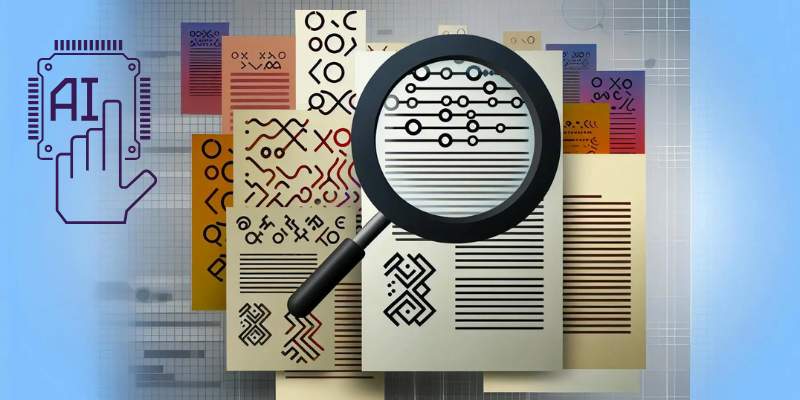A sentence can look squeaky clean and still set off alarms. Another can be rough around the edges and pass every scan.
What gives? Different tools ask different questions. Plagiarism checkers look for overlap with existing text. AI detectors try to guess how a text was produced. Knowing which is which saves you time, stress, and—let’s be honest—revisions you didn’t need.
The one-paragraph version
Plagiarism checkers compare your writing to massive databases (web pages, journals, student papers) and flag similarity.
AI detectors analyze linguistic patterns (think predictability and rhythm) to estimate whether a passage might be AI-written. One checks where words came from; the other guesses who likely wrote them. Treat both as signals, not verdicts.
Quick dialogue to ground this
You: Can a plagiarism checker tell if I used AI?
Me: Not directly. It spots matching or close-matching text. If your draft mirrors a source, it’ll ping you—AI or not.
You: Then what do AI detectors do?
Me: They estimate “AI-likeness” from style patterns. Useful, but noisy. False positives happen, especially with formulaic topics or ultra-polished prose.
You: So what should I actually do?
Me: Write from your notes, cite distinctive ideas, and use tools as nudges. When a flag pops, fix substance—not just synonyms.
What plagiarism checkers actually do
- String and pattern matching. They compare your text to indexed sources and prior submissions.
- Near-duplicate spotting. They’ll catch paraphrases that keep the original skeleton.
- Citation awareness. Many distinguish quoted/cited material from uncited overlap.
- Strengths: Great for finding accidental copying, missed quotation marks, or over-reliance on one source.
- Limits: Can’t tell whether your ideas are original, only whether your wording is suspiciously close to known text.
What AI detection tools actually do
- Probability profiling. They look at how “predictable” your sentences are, based on language models.
- Burstiness/perplexity heuristics. Human writing often varies in rhythm; model output sometimes evens things out.
- Strengths: Can flag obviously template-like, low-variance passages that deserve a rewrite.
- Limits: False positives for second-language writers, highly technical summaries, or overly polished edits. No tool can prove authorship.
Why the distinction matters (and when it bites)
Picture a student summarizing three papers. The summary is flawless—but the sentence structure tracks a source too closely. Plagiarism checker pings; AI detector shrugs. Different problem, different fix.
Now imagine a marketer who drafts from scratch and polishes heavily. Similarity is low, but the tone is ultra-regular. AI detector pings; plagiarism checker shrugs. Again, different fix.
A quick, non-linear detour
Years ago I rewrote a white paper until it sounded like a marble countertop—smooth, cold, perfect. The plagiarism score was near zero. An editor still asked, “Did a bot write this?” The cure wasn’t camouflage; it was story.
I added a two-line scene: a network engineer rebooting a rack at 2:07 a.m., fingers numb, SLA ticking. Suddenly the piece had fingerprints—mine—and the conversation moved on.
How to use both tools without losing your mind
- Run a similarity check near the end. If overlap is flagged, quote + cite or rebuild the paragraph from notes.
- Use AI detection as a vibe check. If it pings, vary rhythm, add a concrete example, and state your judgment in plain words.
- Document sources as you go. A tiny “influences” list in your draft keeps citations honest.
- Talk to stakeholders. If your school or newsroom has a policy, follow it and include a short disclosure when required.
Choosing software wisely
If your organization requires a plagiarism checker that detects content generated with ai, treat that “AI detection” feature as a heuristic—not a courtroom ruling. Ask for:
- Clear reports. Show matched sources, highlight uncited overlap, separate quotes.
- Adjustable thresholds. False alarms waste time.
- Privacy safeguards. Your draft shouldn’t secretly become someone else’s “prior submission.”
Practical prompts that keep your voice (and pass checks)
- “Reorder these points for a clearer arc; don’t change any claims.”
- “Tighten to ~200 words; keep rhetorical questions and first-person asides.”
- “Flag clichés and generic phrasing; I’ll rewrite those lines myself.”
- “Explain for a smart non-expert; preserve domain terms that matter.”
Style moves that add human texture
- Controlled fragments. For emphasis. Not a habit—an instrument.
- Concrete nouns and small scenes. Swap “optimize workflows” for “cut handoffs from four to two.”
- Asymmetric rhythm. A long paragraph, then a one-line jab.
- Occasional idiom or slang when it fits the audience. Precision over performance.
Empathy, on purpose
Ask where a reader might feel rushed, judged, or lost. Add one line that names that feeling and offers a path forward. Information persuades; empathy keeps them with you.
When a report flags you (feedback, not panic)
- Pause. A red bar is a request for edits, not a scarlet letter.
- Diagnose. Is the issue copied phrasing or generic “AI vibe”?
- Repair with substance. Quote + cite distinctive language, or rebuild structure from notes and add your take.
- Leave a breadcrumb. A quick note to your editor/teacher—what changed and why—builds trust.
My stance, plainly
Detectors are tools, not judges. Good writing is honest about its lineage and confident about its voice. If you build from notes, cite real influences, and speak in specifics, you won’t be wrestling scores—you’ll be serving readers.
A compact checklist before you hit publish
- Drafted from notes, not from massaged source sentences.
- Distinctive frames and examples credited.
- Paragraphs carry a claim, evidence, and a why-it-matters.
- Rhythm varied; at least one concrete example added.
- Similarity report reviewed; flagged parts quoted/cited or rebuilt.
- If policy requires it, a brief disclosure about AI-assisted editing is included.
One last nudge
Write like you’re accountable to a future you—the one who has to defend the work, out loud, in front of a smart audience. That future you will thank present you for the clarity, the receipts, and the voice.

